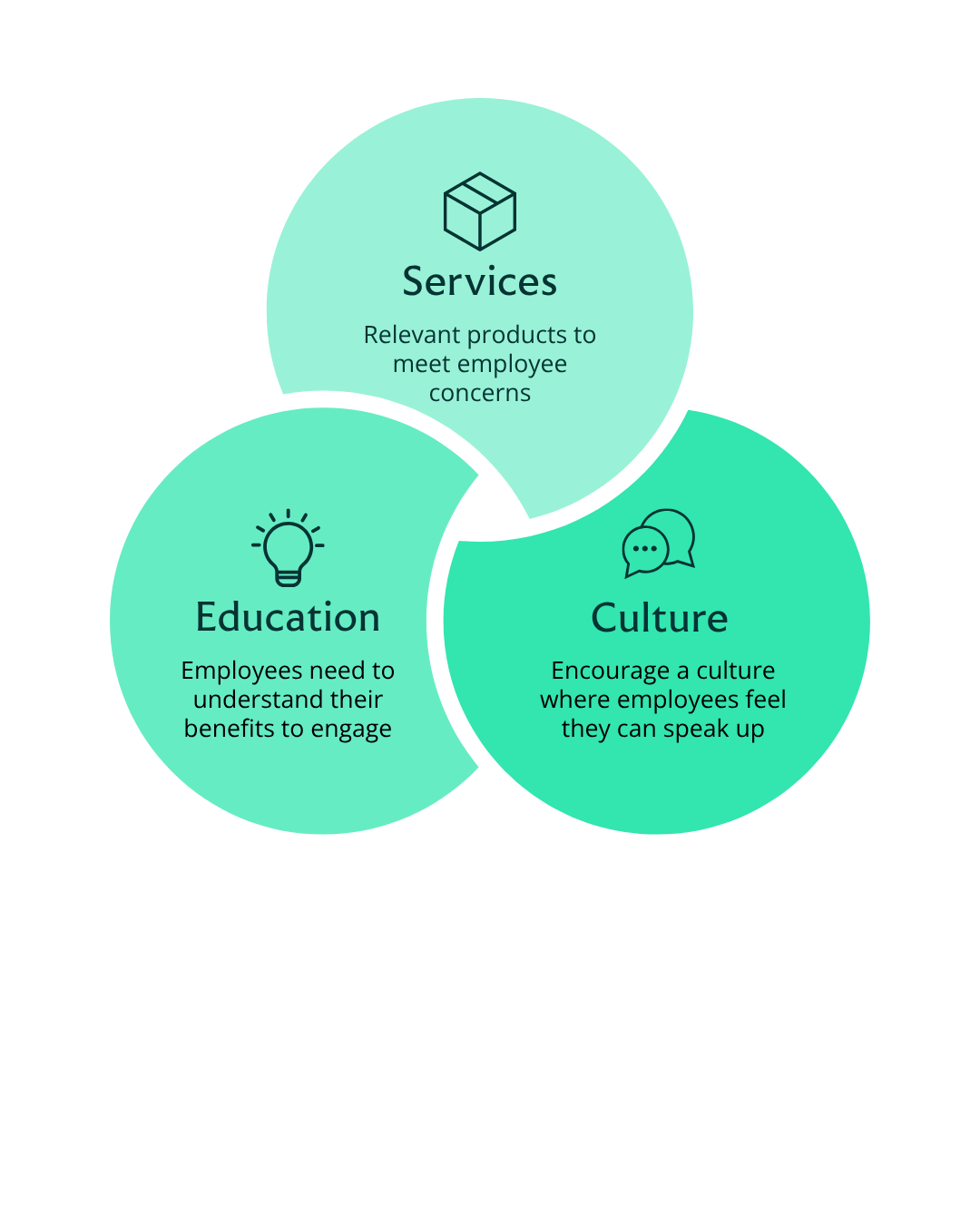Work-related ill health and non-fatal injuries cost an estimated 33.7 million working days in a year (2023-2024), and 16.4 million of those were due to stress, depression or anxiety.
These figures highlight the commercial benefits of a strong employee benefits strategy – but even as companies increase their offerings, our Workplace team consider whether they are fit for purpose and provide good value. Wren Sterling’s Director of Corporate Solutions, Paul Mitchell, says “We often come across clients who have a benefits strategy in place – but are still facing retention and sickness issues.”
Why is this the case? Employee wellbeing isn’t just about providing PMI or a cycle to work scheme. It’s about employee’s wellbeing, workplace culture and how employees engage with your company, their work, and the business goals.
What is workplace wellbeing?
Workplace wellbeing refers to the mental, emotional and physical health of employees. A strong workplace wellbeing strategy supports employees with their concerns at work and at home, helping them focus on the task at hand to help them perform at their best for organisational success.
It’s not enough to buy wellbeing services and expect things to improve. How businesses implement and embed workplace wellbeing is crucial.
Good wellbeing services will not make a good wellbeing strategy. You need to communicate and educate employees about what’s available and promote a positive workplace culture.Paul Mitchell, Wren Sterling
When employee wellbeing and organisational goals are met, and efforts to support staff are both compassionate and commercially sound, workplace wellbeing will drive business performance and employee loyalty.
Our Workplace team supports employers to find the most appropriate products and services – and most importantly – help communicate them to employees, to embed a strong culture of workplace wellbeing.





